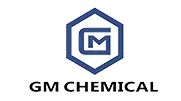Company News
Do You Know the Typical Applications of Silane?
Sep. 03, 2020
A) Coupling agent:
Organofunctional alkoxysilanes are used to couple organic polymers and inorganic materials. The typical feature of this application is enhancement. Such as: glass fiber and mineral filler mixed with plastic and rubber. They are used with thermosetting and thermoplastic systems. Mineral fillers, such as white carbon black, talc mother, wollastonite, clay and other materials are added directly in the mixing process or pre-treated with silane or in the compounding process.
By using organofunctional silanes on hydrophilic, non-organic reactive fillers, the mineral surface becomes reactive and lipophilic. The applications of fiberglass include car bodies, ships, showers, printed circuit boards, satellite TV antennas, plastic pipes and containers, and others.
Mineral filling systems include reinforced polypropylene, white carbon black filled molding compounds, silicon carbide grinding wheels, pellet-filled polymer concrete, sand-filled casting resin and clay-filled EPDM wires and cables, as well as for automobile tires, shoe soles, and machinery Materials and other applications of clay and white carbon black filled rubber.

B) Adhesion promoter
When used to bond paint, ink, coating, adhesive and sealant adherends and primers, silane coupling agents are effective adhesion promoters. When used as an overall additive, silane must migrate to the interface between the adhesive and the processed material to be effective. When used as a primer, the silane coupling agent must be used for inorganic materials before the product is bonded. .
In this case: Silane is in the best position as an adhesion enhancer (in the interface area). Through the correct use of silane coupling agent, even in harsh environmental conditions, it is difficult to adhere to oil, ink, Coatings, adhesives or sealants can maintain adhesion for a long time.
C) Sulfur water, dispersant
Siloxanes with hydrophobic organic groups attached to silicon atoms can impart the same hydrophobic characteristics as hydrophilic inorganic surfaces. They are used as permanent hydrophobic agents in construction, bridge and deck applications. They are also used in hydrophobic inorganic powders to make them flow freely and easily dispersed in organic polymers and liquids.
D) Crosslinking agent
Silane chemistry can react with organic polymers to bind tri-alkoxy alkyl groups to the polymer backbone. The silane can then react with water vapor to crosslink the silane to form a stable three-dimensional siloxane structure . This mechanism can be used to cross-link plastics, especially polyethylene and other organic resins, such as acrylic resins and urethane rubbers, to give paints, coatings and adhesives durability, water resistance, and high temperature resistance.
PSI-520 silane coupling agent is used for the organic dispersion treatment of MH/AH, kaolin, talc and other fillers. It is also suitable for MH/AH organic treatment and applied to halogen-free cable materials. For the treatment of inorganic powder materials, its hydrophobicity is above 98%, and the water contact angle on the surface of the organic inorganic powder is ≥110º, which can efficiently disperse the inorganic powder in organic polymers such as resin, plastic and rubber. : Improve the dispersion performance of the filler; increase the limiting oxygen index (LOI); increase the hydrophobicity of the filler, and also improve the electrical properties (dielectric constant tan, body electrical ρD), after encountering water; increase the amount of filler added, and at the same time It has higher tensile strength and elongation at break; improved heat resistance and high temperature creep; improved chemical resistance; higher impact resistance; improved process stability and productivity of extrusion and mixing.
Previous: Characteristics and Uses of Boric Acid
Next: Applications of Silane






